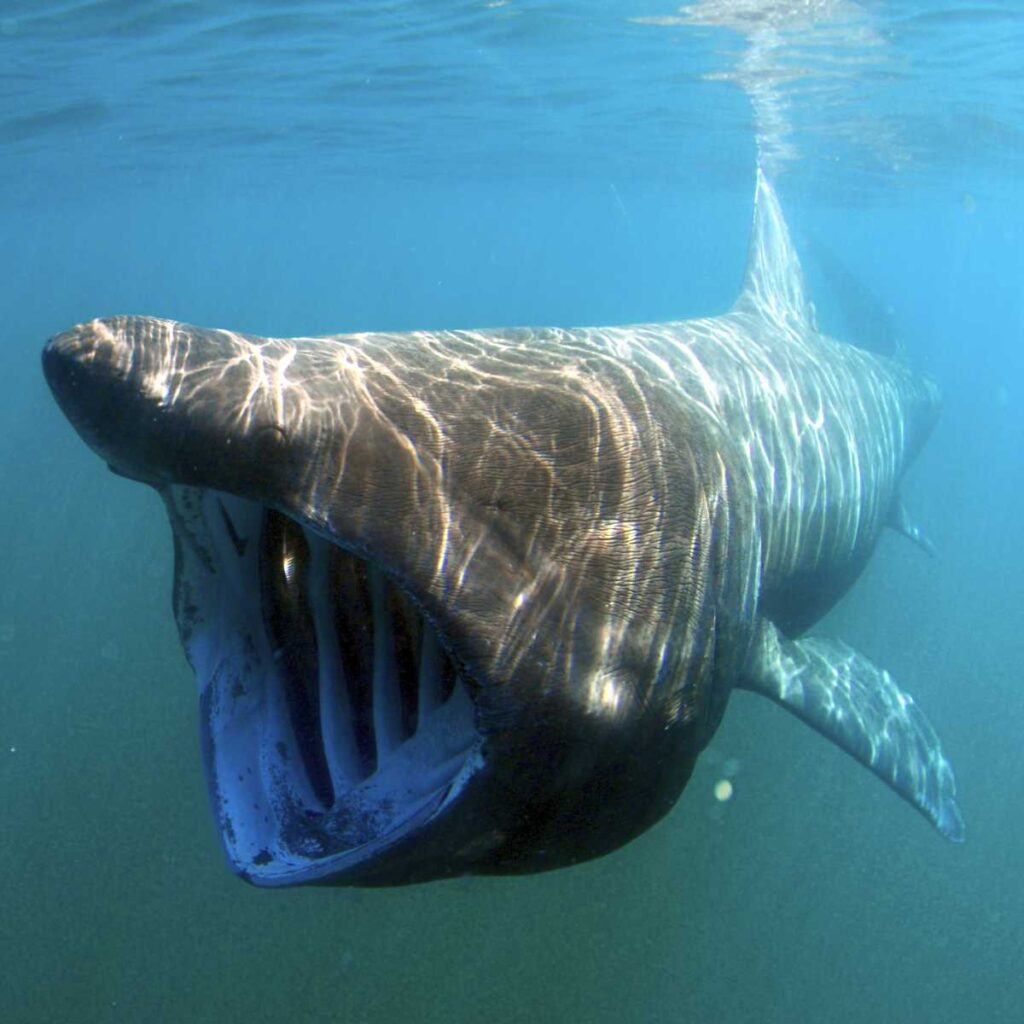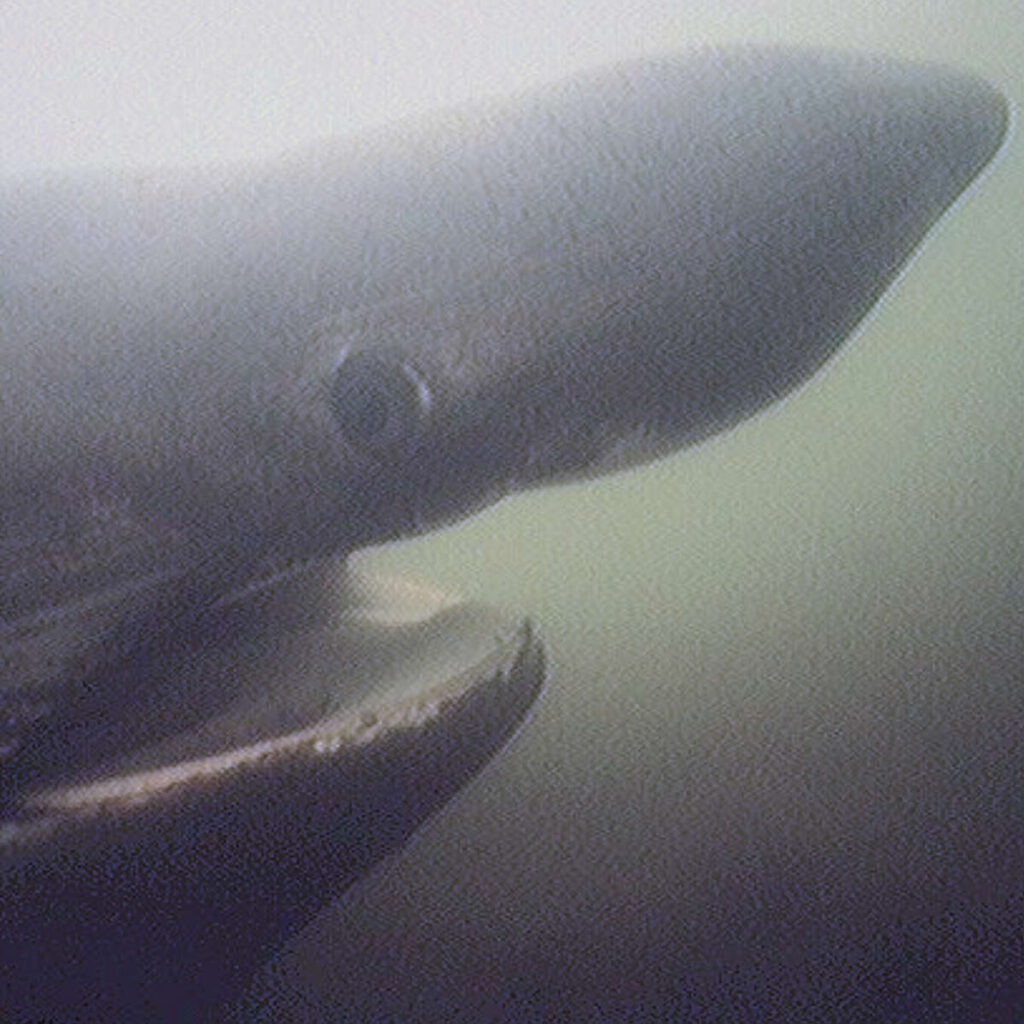Last Reviewed and Updated on January 21, 2023
Basking sharks are one of the largest fish in the ocean, and while they may look terrifying, they are harmless to humans. These grayish-brown sharks can be spotted all over the world. Read on and learn more about this fascinating species, from the basic information to some of the most interesting facts about basking sharks.

About basking sharks
Basking sharks (Cetorhinus maximus) are found worldwide in temperate waters. They migrate long distances, following the plankton blooms that are their main food source. They can be found in cold and warm waters, and while they are most commonly near the surface, they can also make deep dives.
Basking sharks can typically grow up to about 26 feet / 8 meters in length on average but can also be larger.
They are ram filter feeders, meaning they feed on plankton (and small fish and invertebrates) by swimming with their mouths open and filtering the water through their gills.
Basking sharks are ovoviviparous, meaning the eggs hatch inside the female’s uterus, and the young are born live. Gestation is thought to span over a year, however, there isn’t enough data on their reproduction to know for sure.
Facts about basking sharks
You know all there is to know about the basic information about this species; now, let’s explore some of the most interesting facts about basking sharks.

1. Basking shark is the second largest shark and fish
Basking sharks are the second largest shark and fish in the world, with only the whale shark being larger.
They can grow to an impressive size of up to 40 feet / 12 meters in length and weigh up to 7 tons. Despite their large size, they are harmless to humans. They may not evade boats when they swim toward them, so they might bump into one and turn it over.
2. They are one of the three plankton-eating sharks
Basking sharks are one of the three plankton-eating sharks. The other two are the whale shark and the megamouth shark. All three species are filter feeders, meaning they strain food from large amounts of water.
3. They got their name because of where they mostly feed
Basking sharks got their name because they are often seen feeding near the surface of the water, giving the appearance of basking in the sun.
4. Basking sharks have about 1500 teeth
Their teeth are arranged in rows; they have 6 rows of teeth on their upper jaw and 9 rows of teeth in their bottom jaws. Each row has around 100 teeth. Their teeth are tiny, are curved backward and are the same both on the upper and lower jaw.
Their teeth are useless when it comes to feeding as adults, and they don’t use them in defense.
5. They have the smallest brain-to-body size ratio of all sharks
Sharks aren’t famous for their brain size, and when it comes to brain-to-body size, basking sharks have the smallest brains.
The possible explanation for this lies in their lifestyle; these plankton-eating sharks lead a slow and uneventful life that does not require a lot of “thinking” (source).
6. They can be mistaken for white sharks

One is dangerous, and one is not. While you will easily tell them apart when they have their mouths open, with their mouths being close to closed, these two shark species look pretty similar. It’s easy to confuse one for the other.
7. Basking sharks have large livers
Their livers can make up to 25% of their body weight on average (it can be more). This makes it one of the largest livers of any animal. The liver runs across the entire length of the abdominal cavity.
The liver is filled with oil and is thought to play a role in buoyancy and long-term energy storage.
8. They are slow swimmers but can breach the water
Basking sharks are very slow swimmers; when they feed, they move around at 2 knots / 2.3 miles per hour / 3.7 kilometers per hour. Not exactly the speeds you would imagine would make an animal as large as this shark capable of jumping out of the water. However, basking sharks can breach; they can jump entirely out of the water.
9. In females, only the right ovary is functional
Females have two ovaries, but only the right one seems to be functional. It is unknown why only one of the ovaries works and the other does not.
10. Their teeth may play a role before birth
The developing embryos of basking sharks first rely on a yolk sack. After that, the more developed embryo feeds on the mother’s unfertilized ova, and their teeth may help them eat those. The young are born live.
